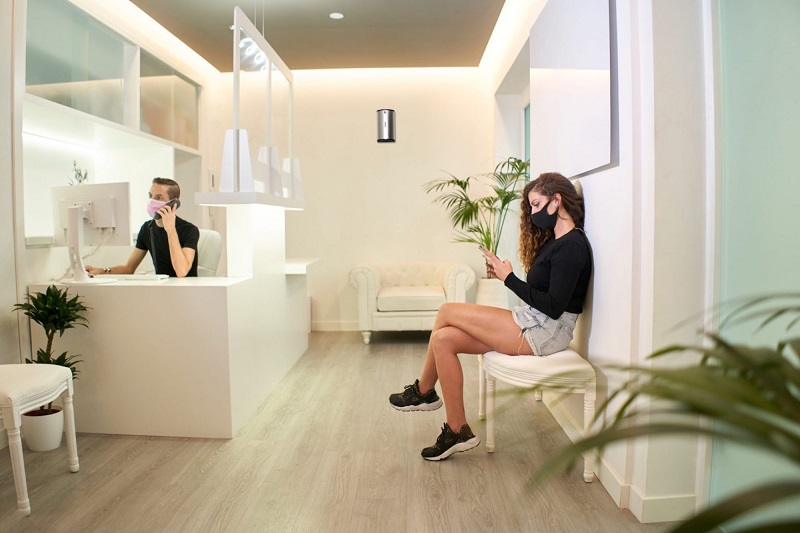A trial of Airdri’s SteraSpace air and surface sanitisation systems at a health test centre run by Liverpool-based DAM Healthcare has shown a higher than 89% reduction in bacteria levels after 14 days of continuous usage.
The company, which provides a range of healthcare services, including gut health, menopause, and fertility testing, carried out an independent trial at one of its COVID-19 test centres, where the units were positioned in the practice waiting room.
Keeping test centres clean was at the top of the agenda during the Coronavirus pandemic and plays an ongoing role post pandemic in ensuring both the support of staff and patient safety.
Bryan Adekoya, head of procurement for the Dam Group, said: “As a COVID-19 testing centre, we were at very high risk of daily exposure from working with the virus and wanted to reduce the risk of transmission.
“We needed to ensure the safety of our staff and patients during the pandemic.
“Due to the nature of the business, we ran a high risk of having a COVID-19 outbreak, so we implemented extra cleaning and introduced regulations for all who entered the premises, such as wearing a face mask and sanitising hands.
“After extra cleaning was implemented, we looked into HEPA filters and decided to fit a HEPA filtration ventilation in all lab rooms. We then came across Airdri’s range of air sanitisers and decided to run a live trial in our Rodney Street practice in Liverpool.
“The SteraSpace is very practical and easy to use and we have had no trouble with the units. They are non-intrusive and once you fit them onto the wall, you forget they are even there.”
Testing and results
SteraSpace units were installed in the practice waiting room and a live trial was conducted by ALS Laboratories.
Air plate samples were taken as a baseline before the unit was installed and then subsequent test samples were taken from the same positions 14 days after the SteraSpace had been installed.
The sanitiser unit was running continuously throughout this time to assess the potential impact on the microbial content of the air. This assessment was based on reducing colony-forming units settling plates, which were set out for 120 minutes at key testing points.
The units work in under 60 minutes and cost £2 a month to run
How it works
The SteraSpace sanitisation technology works to continually remove airborne and surface pathogens by sanitising surrounding air and exposed surfaces, therefore significantly reducing the opportunity for transmission of viruses, including seasonal colds and flu as well as other illnesses.
The units combine Photo Catalytic Disinfection (PCD), Germicidal Irradiation, and Dual Waveband UV technology to create the most-advanced virus and bacteria control technology of its kind.
This offers a unique and highly-effective way to eliminate bacteria, mould, yeasts, viruses, dust mites, allergens, and harmful VOCs to result in clean, healthy air and surfaces in the workplace.
By combining these three advanced technologies, a continuous flow of disinfecting plasma is released into the air, eliminating 98.11% of airborne and 99.6% of surface micro-organisms.
And it works in under 60 minutes.
After the initial installation cost, the units cost in the region of just £2 per month to run, with an annual outlay of around £50 for a new bulb.
Airdri’s chief operating officer, Steve Whittall, said: “Enveloped viruses can survive longer under winter conditions as the low temperatures help to protect the structural integrity of the envelope, guarding the virus.
“A solution against this would be the installation of air sanitisation units such as the SteraSpace, which effectively and continuously eliminate harmful pathogens, even in spaces with poor ventilation and under constant use.
“When used in a healthcare environment and independently tested, the units were found to reduce bacteria by almost 90%.”
